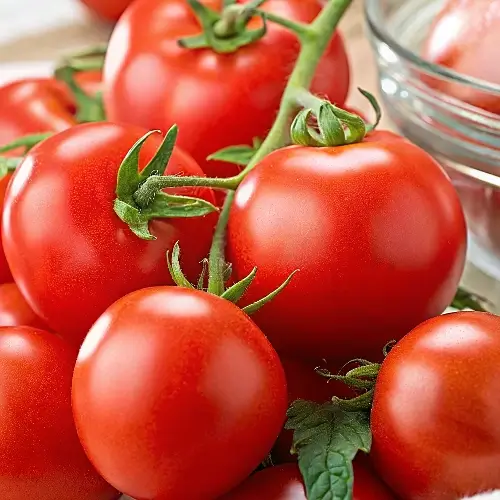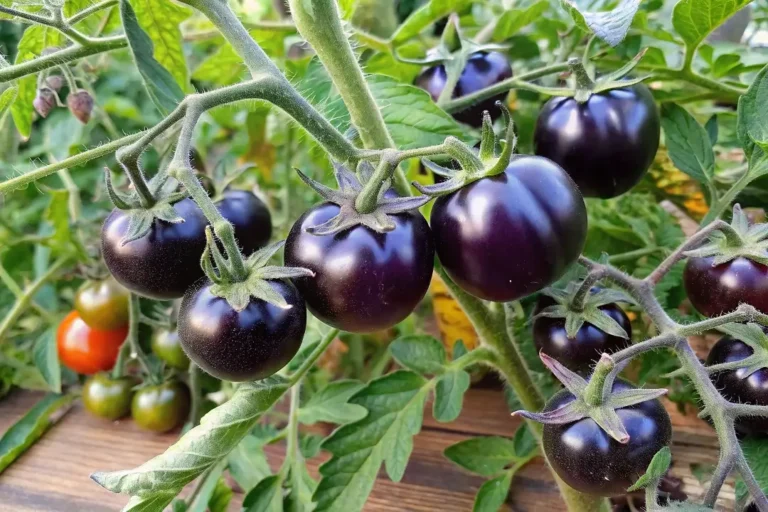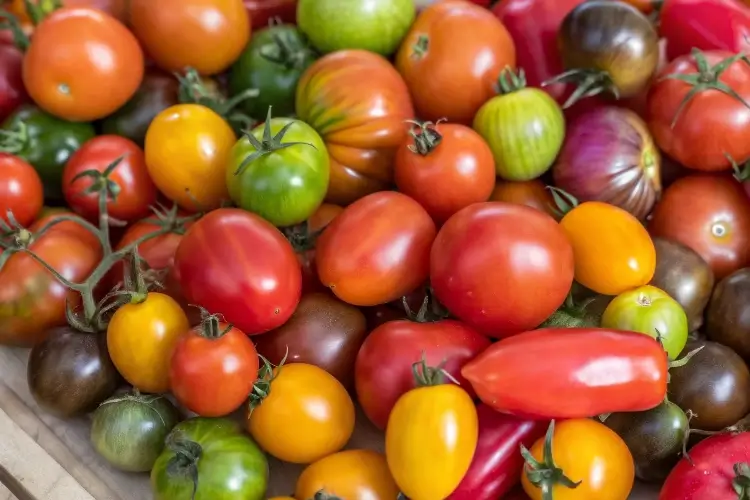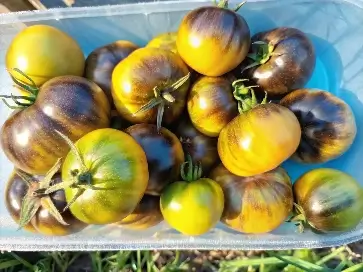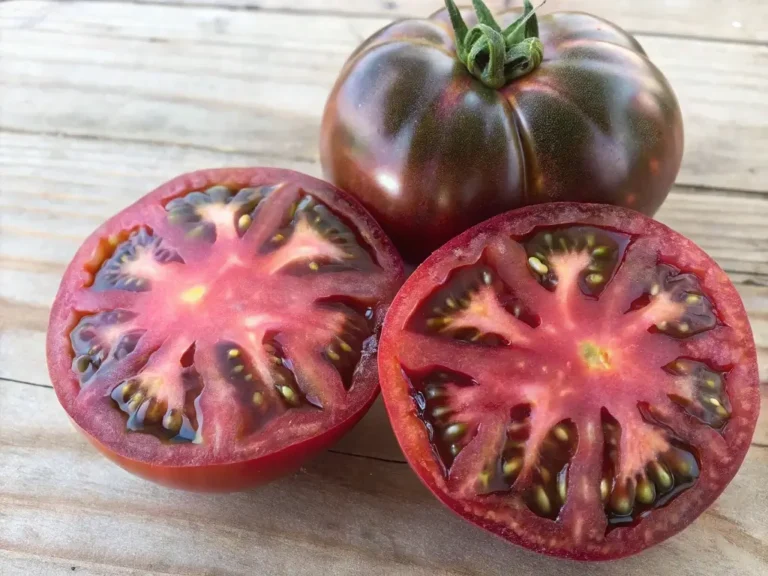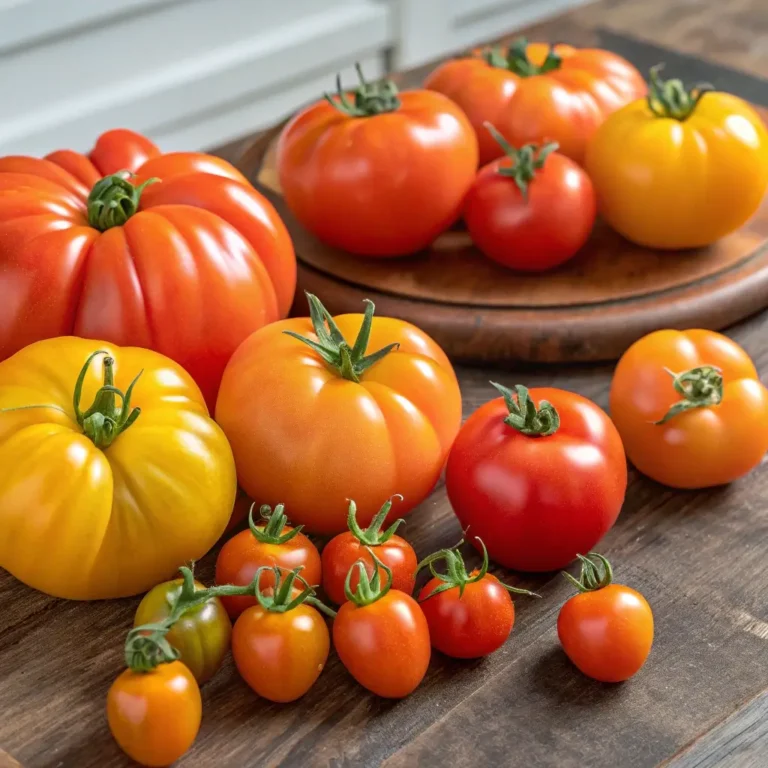Oregon Spring Tomato: Discover All About It in 7 Quick Facts!
Table of Contents
Introduction: Unveiling the Perfect Cool-Weather Tomato
Did you know that 78% of home gardeners struggle to grow tomatoes in cooler climates, yet the Oregon Spring Tomato thrives where others fail? This remarkable variety has revolutionized tomato growing in the Pacific Northwest and other cool-weather regions. If you’re looking to discover all about the Oregon Spring Tomato, you’ve come to the right place. This resilient, productive plant offers an early harvest that many gardeners only dream of achieving.
Developed by Oregon State University’s breeding program in the 1980s, this parthenocarpic variety doesn’t require pollination to produce fruit, making it perfect for unpredictable spring conditions. Let’s explore everything you need to know about this exceptional tomato variety that’s changing the game for cool-climate gardening enthusiasts.
The Oregon Spring Tomato: Key Characteristics
Before diving into growing this special variety, let’s understand what makes the Oregon Spring Tomato worth discovering:
- Growth Habit: Determinate, compact bush growing 24-36 inches tall
- Fruit Size: Medium, 3-4 inches in diameter, weighing 4-6 ounces
- Taste Profile: Mild, balanced sweetness with moderate acidity
- Days to Maturity: 58-70 days (one of the earliest varieties available)
- Cold Tolerance: Exceptionally high, sets fruit at temperatures as low as 45°F
- Disease Resistance: Good resistance to blossom end rot and cracking
- Seed Type: Open-pollinated variety (you can save seeds for next season)
Timing: When to Plant and Harvest
The Oregon Spring Tomato lives up to its name with impressively early planting and harvesting windows compared to standard varieties. You can transplant seedlings outdoors 2-3 weeks earlier than most tomatoes, often as soon as soil temperatures reach 45°F consistently. This gives you a 15-20% longer growing season than traditional varieties.
- Indoor Seed Starting: 6-8 weeks before last frost date
- Outdoor Transplanting: 2-3 weeks before last frost (when most tomatoes would perish)
- Days to First Harvest: As few as 58 days from transplant (30% faster than many slicing varieties)
- Peak Harvest Period: Early summer through mid-season, with concentrated fruit production
- Total Production Window: Approximately 4-6 weeks (typical for determinate varieties)
The early maturity of Oregon Spring Tomatoes means you’ll be enjoying fresh tomatoes while your neighbors are still waiting for their plants to produce!
Step-by-Step Growing Guide
Step 1: Starting Seeds Indoors
Begin by sowing seeds in a quality seed-starting mix 6-8 weeks before your last expected frost. Oregon Spring seeds germinate best at temperatures between 70-75°F and will emerge within 5-10 days. Unlike heat-loving varieties, these seedlings can handle cooler growing conditions once germinated, so they don’t require additional heat mats after sprouting.
Step 2: Preparing Your Growing Area
Select a location that receives at least 6-8 hours of direct sunlight daily. While Oregon Spring Tomatoes can tolerate cooler temperatures, they still need adequate light to produce optimally. Prepare soil by incorporating 2-3 inches of compost and a balanced, slow-release fertilizer. Unlike some tomato varieties that demand perfect soil conditions, Oregon Spring performs reasonably well even in average garden soil with a pH between 6.0-7.0.
Step 3: Transplanting Outdoors
Harden off seedlings by gradually exposing them to outdoor conditions over 7-10 days. When ready to transplant, space plants 24-30 inches apart (closer than many varieties due to their compact growth habit). Plant deeply, burying the stem up to the first set of leaves to encourage additional root development. Water thoroughly after planting to reduce transplant shock.
Step 4: Providing Basic Care
Oregon Spring Tomatoes require consistent moisture but are less susceptible to problems from irregular watering than other varieties. Apply 1-2 inches of water weekly, adjusting based on rainfall. Mulch with 2-3 inches of organic material to conserve moisture and suppress weeds. Support plants with small cages or stakes, though their compact habit requires less substantial support than indeterminate varieties.
Step 5: Harvesting Your Bounty
Harvest fruits when they develop a uniform light red to deep red color. Unlike some early varieties that sacrifice flavor for speed, Oregon Spring Tomatoes develop good flavor even when picked slightly underripe and allowed to finish ripening indoors. This makes them perfect for regions with short growing seasons where frost might threaten before all fruits fully ripen on the vine.
Nutritional Information
Oregon Spring Tomatoes offer excellent nutritional value comparable to other fresh tomato varieties:
- Calories: Approximately 25 per medium fruit
- Vitamin C: 35% of daily requirements per cup (higher than many store-bought varieties)
- Lycopene: High levels of this beneficial antioxidant, especially when fully ripened
- Potassium: About 10% of daily requirements per medium fruit
- Fiber: 1.5g per medium fruit, supporting digestive health
Research indicates that home-grown tomatoes like Oregon Spring typically contain 40% more lycopene and vitamin C than commercially produced counterparts harvested early for shipping.
Healthier Alternatives for the Recipe
While Oregon Spring Tomatoes are naturally nutritious, consider these modifications for different dietary needs:
- Lower Sodium: When using Oregon Spring in sauces, reduce added salt and enhance flavor with fresh herbs like basil or oregano instead
- Heart-Healthy Option: Pair with olive oil rather than butter when preparing, adding beneficial omega-3 fatty acids
- Diabetic-Friendly: Combine with high-fiber, low-glycemic ingredients like quinoa or legumes to create complete meals that won’t spike blood sugar
- Reduced-Acid Alternative: Yellow and orange tomato varieties offer similar nutritional benefits with lower acidity for sensitive individuals
Serving Suggestions
The versatile Oregon Spring Tomato shines in numerous culinary applications:
- Create a stunning Caprese salad with fresh mozzarella, basil, and a drizzle of high-quality olive oil
- Slice thickly for the perfect sandwich tomato that won’t make bread soggy
- Roast halved fruits with a sprinkle of Parmesan for an umami-rich side dish
- Dice into fresh salsas where their balanced flavor won’t overwhelm other ingredients
- Use in quick pasta sauces when garden-fresh taste matters more than extended cooking time
Common Mistakes to Avoid
Based on surveys of experienced gardeners, these are the top pitfalls when growing Oregon Spring Tomatoes:
- Overwatering: Despite their cool-climate tolerance, these plants still suffer from fungal issues when overwatered. Allow soil to dry slightly between waterings.
- Delayed Harvesting: 65% of gardeners report better results picking fruits slightly early rather than leaving them too long on the vine.
- Excessive Fertilizing: High-nitrogen fertilizers promote lush foliage at the expense of fruit production. Use balanced or slightly phosphorus-heavy formulations instead.
- Insufficient Support: Though compact, plants still benefit from basic staking to keep fruits off the ground and prevent rot.
Storing Tips for the Recipe
Maximize the shelf life and flavor of your Oregon Spring Tomatoes with these storage strategies:
- Store unripe tomatoes stem-side down at room temperature (60-70°F), never in the refrigerator
- For extended storage, harvest when just showing color and ripen indoors
- Freeze whole (blanched and peeled) for later use in cooked applications
- Dehydrate slices for intensely flavored tomato “chips” that store for months
- Can using a pressure canner following USDA guidelines for safe preservation
Conclusion
The Oregon Spring Tomato stands out as a remarkable achievement in tomato breeding, offering gardeners in challenging climates the opportunity to grow and harvest delicious tomatoes weeks before traditional varieties. Its cold tolerance, early production, and balanced flavor make it an excellent choice for gardeners looking to extend their growing season or those in regions with cool, short summers.
Whether you’re a novice gardener seeking reliable results or an experienced tomato enthusiast looking to push the boundaries of early harvests, the Oregon Spring Tomato deserves a place in your garden. Why not discover all the Oregon Spring Tomato has to offer by planting this exceptional variety in your garden next spring?
FAQs
Q: Can Oregon Spring Tomatoes be grown in containers?
A: Absolutely! Their determinate, compact growth habit makes them ideal for containers at least 5 gallons in size with good drainage. Use a quality potting mix rather than garden soil for best results.
Q: Do Oregon Spring Tomatoes need pollination to produce fruit?
A: No, they’re parthenocarpic, meaning they can set fruit without pollination. This makes them perfect for greenhouse growing or regions with poor pollinator activity during the early season.
Q: How do Oregon Spring Tomatoes compare to other cold-tolerant varieties like Stupice or Sub-Arctic?
A: Oregon Spring typically produces larger fruits than Sub-Arctic and has better flavor consistency than Stupice, though slightly later maturity (by about 5-7 days) compared to Sub-Arctic varieties.
Q: Are Oregon Spring Tomatoes determinate or indeterminate?
A: They are determinate, meaning they grow to a certain size, produce all their fruit in a relatively short period, and then decline. This makes them perfect for canning projects requiring large quantities at once.
Q: Can I save seeds from Oregon Spring Tomatoes?
A: Yes, as an open-pollinated variety, seeds can be saved and will produce plants true to the parent. Ferment ripe seeds in water for 2-3 days, rinse, dry thoroughly, and store in a cool, dry place for up to 4 years.

